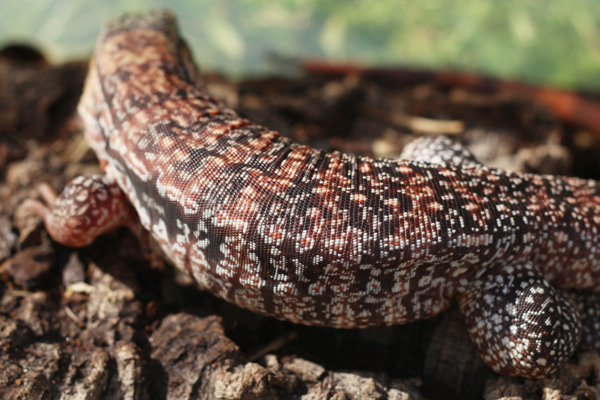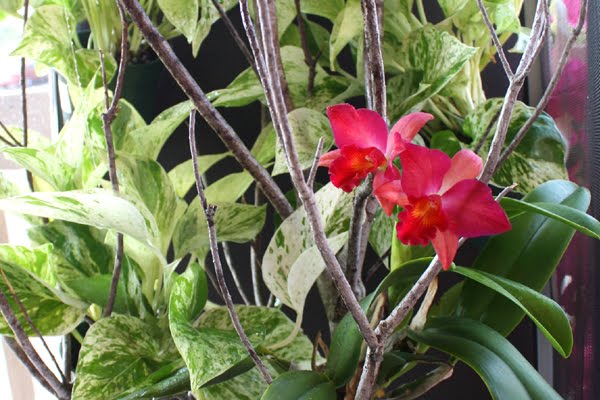The last few weeks have featured a lot of little Mojito, my Cuban knight anole (Anolis equestris.) To be perfectly frank, when I attended the Miami Repticon at the University of Miami campus earlier this Fall I was not planning on coming home with anything alive besides feeder insects. But when I saw cups with baby lime-green anoles I stopped and admired them for a brief moment, and then meandered onward to buy some cork bark for the leachies. But then I circled back. How cute they are, I thought. And then kept going so I could buy the crickets and hornworms I needed for my pets. And then I looped back around a third time, and looked at them again over the shoulders of other show-goers.
You get the idea, I’m sure.
Long story short, by the time I made it home that afternoon I had a new pet.
Yes, Mojito may have been an impulse purchase (do as I say, not as I do, anyone?) but as an underrated species that could make a very rewarding pet, I decided that I would try my hand at raising one and use him as another ambassador for the blog. So this week’s post will feature him exclusively, and we’ll take a look at how easy it is to care for these beautiful large anoles when you already have some experience with chameleons.
There is relatively little in the way of care information about this species online. There might be a brief, very basic overview in an online reptile magazine and a few forum posts but not much as far as comprehensive care guides. Rest assured however, they are not a difficult species to care for, and they are quite hardy.
As the name implies we have Cuba to thank for this gecko, which is the largest recognized Anolis species, measuring as much as 20” from tip to tip. As they so often do, this species found itself upon the shores of balmy, humid, subtropical Miami (and surrounding areas and keys) and has made itself quite comfortable here among the urban and farmland sprawls of the area. In my neighborhood they are abundant, often basking on the trunks of oaks or waiting in the branches of mango trees for a smaller lizard or insect to wander into range. And a happy, healthy knight anole is quite a sight with their bright green and yellow flanks, their large peach-red dewlap, and their intelligent black eyes.
I keep Mojito in a custom PVC hybrid cage, where the front door panel and the top are aluminum screen and the back three panels are solid. The cage measures 24” T x 18” W x 18” D, which will be suitable for the next few months until he really starts getting large, and then I feel that a 48” tall cage will be the most suitable to an animal of this size and activity level. But for now, at all of 10 grams, this cage will be plenty. I have it decorated with plenty of branches for climbing and plants for cover. To see a tutorial of how I decorated his cage, go HERE.
Atop his cage for basking and UVB I am using the all-in-one MegaRay Mercury Vapor bulb in 70w strength (for the first time, more on this in a future post). In addition to this I have a Reptisun 10.0 T-8 linear bulb that hangs across the top as well, which helps provide a fuller spectrum of UVA/UVB light. I do not know if I would be comfortable using only a mercury vapor light alone yet. Follow the same lighting requirements as for chameleons, essentially.
A Mistking nozzle is also connected to the cage and mists twice a day for 2-4 minutes at a time, so that there are two large spikes in humidity during the day and two ample opportunities where he can drink plenty of water. As with chameleons, let the cage dry between misting sessions but provide various peaks of high humidity throughout the day and do not spray the cage during the night.
I am also supplementing the same way as I would a typical panther or veiled chameleon, by using a plain calcium powder at most feedings with a multivitamin with vitamin D3 sprinkled in 2-3 times a month. All his insects are also properly gut-loaded with high-grade commercial insect food and fresh fruits and veggies.
As you can see, I do free range little Mojito occasionally when I know I will be sitting at my desk a while. Since he is so small I do actually worry about losing him, but so far he has been very well-behaved, and the free-range time allows him to build trust in me. I also hand-feed insects whenever I have time to sit in front of the cage, and all these things help him to learn to trust me. He is not aggressive (as this species can often be) but he is shy, so I am focusing right now on patient and gentle conditioning with food and free-range time.
Overall I really do find this species to be a very pleasant and interesting one to own, and can make a great alternative species for someone who wants a tropical and arboreal species but may not be ready for something much more delicate. They are hardy, inquisitive, relatively easy to care for, and require a lot of the same conditions as chameleons, so for anyone that already owns chameleons adding a knight anole to their family would be an easy jump.
You get the idea, I’m sure.
Long story short, by the time I made it home that afternoon I had a new pet.
Yes, Mojito may have been an impulse purchase (do as I say, not as I do, anyone?) but as an underrated species that could make a very rewarding pet, I decided that I would try my hand at raising one and use him as another ambassador for the blog. So this week’s post will feature him exclusively, and we’ll take a look at how easy it is to care for these beautiful large anoles when you already have some experience with chameleons.
GENERAL HUSBANDRY
There is relatively little in the way of care information about this species online. There might be a brief, very basic overview in an online reptile magazine and a few forum posts but not much as far as comprehensive care guides. Rest assured however, they are not a difficult species to care for, and they are quite hardy.
As the name implies we have Cuba to thank for this gecko, which is the largest recognized Anolis species, measuring as much as 20” from tip to tip. As they so often do, this species found itself upon the shores of balmy, humid, subtropical Miami (and surrounding areas and keys) and has made itself quite comfortable here among the urban and farmland sprawls of the area. In my neighborhood they are abundant, often basking on the trunks of oaks or waiting in the branches of mango trees for a smaller lizard or insect to wander into range. And a happy, healthy knight anole is quite a sight with their bright green and yellow flanks, their large peach-red dewlap, and their intelligent black eyes.
CAGING & CONDITIONS
In terms of care they are extremely similar to common chameleon species, like panthers or veileds. They like it warm with peaks of humidity, like chameleons, and do not usually drink from standing water so misting throughout the day is vital. |
| Hybrid PVC/Screen cage from Rain Forest Habitats |
I keep Mojito in a custom PVC hybrid cage, where the front door panel and the top are aluminum screen and the back three panels are solid. The cage measures 24” T x 18” W x 18” D, which will be suitable for the next few months until he really starts getting large, and then I feel that a 48” tall cage will be the most suitable to an animal of this size and activity level. But for now, at all of 10 grams, this cage will be plenty. I have it decorated with plenty of branches for climbing and plants for cover. To see a tutorial of how I decorated his cage, go HERE.
Atop his cage for basking and UVB I am using the all-in-one MegaRay Mercury Vapor bulb in 70w strength (for the first time, more on this in a future post). In addition to this I have a Reptisun 10.0 T-8 linear bulb that hangs across the top as well, which helps provide a fuller spectrum of UVA/UVB light. I do not know if I would be comfortable using only a mercury vapor light alone yet. Follow the same lighting requirements as for chameleons, essentially.
A Mistking nozzle is also connected to the cage and mists twice a day for 2-4 minutes at a time, so that there are two large spikes in humidity during the day and two ample opportunities where he can drink plenty of water. As with chameleons, let the cage dry between misting sessions but provide various peaks of high humidity throughout the day and do not spray the cage during the night.
FOOD & SUPPLEMENTS
Knight anoles are insectivores so I am providing a diet of insects which features crickets, discoid roaches, superworms, and hornworms mainly with a few extras when I can find them available, like butterworms or mantids. Any chameleon-approved insect is also safe for these anoles.I am also supplementing the same way as I would a typical panther or veiled chameleon, by using a plain calcium powder at most feedings with a multivitamin with vitamin D3 sprinkled in 2-3 times a month. All his insects are also properly gut-loaded with high-grade commercial insect food and fresh fruits and veggies.
HANDLING & TEMPERAMENT
I have only had Mojito a few months, and as my only knight anole so far I cannot speak to the temperament of the species as a whole. However, I find them to be very sharp little lizards. While my Leachianus geckos don’t look as though they are capable of great thoughts, Cuban knight anoles do, in my humble opinion, seem like they are intelligent lizards. I can see it in how he studies everything around him and can figure out the most creative way to jump from my desk over to a large branch I have standing in the corner of my office, from which he likes to people-watch.As you can see, I do free range little Mojito occasionally when I know I will be sitting at my desk a while. Since he is so small I do actually worry about losing him, but so far he has been very well-behaved, and the free-range time allows him to build trust in me. I also hand-feed insects whenever I have time to sit in front of the cage, and all these things help him to learn to trust me. He is not aggressive (as this species can often be) but he is shy, so I am focusing right now on patient and gentle conditioning with food and free-range time.
Overall I really do find this species to be a very pleasant and interesting one to own, and can make a great alternative species for someone who wants a tropical and arboreal species but may not be ready for something much more delicate. They are hardy, inquisitive, relatively easy to care for, and require a lot of the same conditions as chameleons, so for anyone that already owns chameleons adding a knight anole to their family would be an easy jump.

















ดูหนังออนไลน์ฟรี หนังดี หนังดัง ระดับ 4K HD Premium ง่ายๆ ได้ที่ Doonung1234 หลากหลายเรื่อง กับเรื่อง Ip Man 4: The Finale ยิปมัน 4 (2019) [ ซูม ]
ReplyDelete